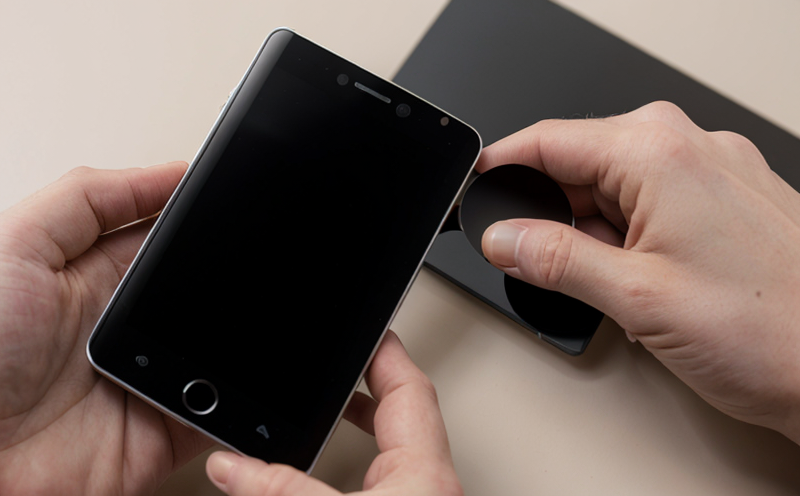ISO 2135 Thickness Measurement of Nano Thin Films
The measurement and control of thickness in nano thin films are critical for ensuring product performance, reliability, and compliance with international standards. This service focuses on the ISO 2135 standard which provides a robust framework for the accurate determination of the thickness of nano thin films.
Our laboratory adheres to this method to provide precise measurements that are essential for quality control in various industries including electronics, optics, and coatings. The process involves thorough preparation of the samples, utilizing advanced instrumentation such as atomic force microscopy (AFM), scanning electron microscopy (SEM), or focused ion beam (FIB) systems.
The ISO 2135 method is particularly important for nano thin films where variations in thickness can significantly impact performance characteristics. For instance, in the electronics industry, deviations in film thickness can affect the electrical conductivity and reliability of microchips. In optics, precise control over film thickness ensures optimal light transmission through lenses or mirrors.
The methodology involves several key steps: sample preparation, which includes cleaning the surface to remove contaminants; measurement using the appropriate instrument; data analysis to determine the average thickness; and finally, reporting the results according to ISO 2135 specifications. The precision of these measurements is crucial for ensuring that products meet the stringent requirements set by international standards.
The importance of this service extends beyond just compliance with standards. It plays a vital role in R&D activities where precise control over film thickness can lead to innovations and improvements in product performance. In procurement, accurate measurement data helps ensure that suppliers deliver materials meeting exact specifications.
Our team of experts ensures that all measurements are conducted under controlled conditions to minimize errors. This includes maintaining a stable environment for the samples and using calibrated instruments. The accuracy of these measurements is further enhanced by employing multiple methods where appropriate, thereby providing comprehensive data that can be cross-verified.
The results from this service are invaluable not only for compliance purposes but also as a tool for continuous improvement in manufacturing processes. By identifying variations in film thickness early on, corrective actions can be taken to address issues before they become critical defects.
Scope and Methodology
The scope of the ISO 2135 standard encompasses the measurement of thickness of nano thin films with a focus on precision and reliability. The methodology outlined in this document specifies the procedures to be followed for obtaining accurate measurements.
Our laboratory employs rigorous quality control measures during each stage of the process to ensure that all measurements adhere strictly to ISO 2135 guidelines. This includes meticulous sample preparation, calibration of instruments, and adherence to standard operating procedures.
The measurement techniques used include advanced technologies such as atomic force microscopy (AFM), scanning electron microscopy (SEM), or focused ion beam (FIB) systems. These methods provide high-resolution images that allow for precise determination of film thickness down to the nanometer scale.
Data analysis is performed using statistical tools to calculate the average and standard deviation of multiple measurements. This ensures not only precision but also consistency in results, which are then reported according to ISO 2135 specifications.
The methodologies described here are particularly relevant for industries where nano thin films play a crucial role such as electronics, optics, and coatings. The ability to accurately measure film thickness allows these industries to maintain high standards of quality and reliability in their products.
Industry Applications
| Industry | Description of Nano Thin Films |
|---|---|
| Electronics | Thin films are used in the manufacture of microchips and other electronic components where precise control over film thickness is essential for optimal performance. |
| Optics | Films are utilized in lenses, mirrors, and other optical devices to ensure accurate light transmission and reflection. |
| Cosmetics | Thin films serve as protective barriers or delivery systems for active ingredients in skincare products. |
| Paints & Coatings | Films are used to enhance the durability and appearance of coatings applied on various surfaces. |
Quality and Reliability Assurance
The quality and reliability assurance processes in our laboratory play a crucial role in ensuring that all measurements are accurate and reliable. This involves several key steps:
Sample Preparation: Samples are prepared under controlled conditions to ensure they are free from contaminants that could affect the measurement results.
Instrument Calibration: All instruments used for thickness measurement are regularly calibrated against international standards to ensure their accuracy.
Data Analysis: Data is analyzed using statistical methods to calculate average and standard deviation, ensuring both precision and consistency in the results.
Reporting: Results are reported according to ISO 2135 specifications, providing clear and concise information that can be easily understood by all stakeholders.
The combination of these processes ensures that our measurements meet the highest standards of quality and reliability. This is particularly important for industries where precision in thickness measurement directly impacts product performance and customer satisfaction.





